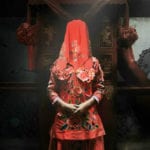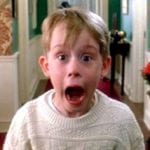 Technology
Technology  Technology
Technology  Humans
Humans 10 Everyday Human Behaviors That Are Actually Survival Instincts
 Animals
Animals 10 Animals That Humiliated and Harmed Historical Leaders
 History
History 10 Most Influential Protests in Modern History
 Creepy
Creepy 10 More Representations of Death from Myth, Legend, and Folktale
 Technology
Technology 10 Scientific Breakthroughs of 2025 That’ll Change Everything
 Our World
Our World 10 Ways Icelandic Culture Makes Other Countries Look Boring
 Misconceptions
Misconceptions 10 Common Misconceptions About the Victorian Era
 Mysteries
Mysteries 10 Strange Unexplained Mysteries of 2025
 Miscellaneous
Miscellaneous 10 of History’s Most Bell-Ringing Finishing Moves
 Technology
Technology Top 10 Everyday Tech Buzzwords That Hide a Darker Past
 Humans
Humans 10 Everyday Human Behaviors That Are Actually Survival Instincts
 Animals
Animals 10 Animals That Humiliated and Harmed Historical Leaders
Who's Behind Listverse?

Jamie Frater
Head Editor
Jamie founded Listverse due to an insatiable desire to share fascinating, obscure, and bizarre facts. He has been a guest speaker on numerous national radio and television stations and is a five time published author.
More About Us History
History 10 Most Influential Protests in Modern History
 Creepy
Creepy 10 More Representations of Death from Myth, Legend, and Folktale
 Technology
Technology 10 Scientific Breakthroughs of 2025 That’ll Change Everything
 Our World
Our World 10 Ways Icelandic Culture Makes Other Countries Look Boring
 Misconceptions
Misconceptions 10 Common Misconceptions About the Victorian Era
 Mysteries
Mysteries 10 Strange Unexplained Mysteries of 2025
 Miscellaneous
Miscellaneous 10 of History’s Most Bell-Ringing Finishing Moves
10 Bizarre Christmas Characters From Around The World
Christmas is coming, and children are writing their letters to Father Christmas or Santa or Pere Noel depending on where the kids live. But no matter how odd it seems to receive gifts from a jolly fat man on a sleigh pulled by flying reindeer, Santa is not the strangest character who pops up in Christmas folklore.
Stories passed from parent to child and embellished with the telling over the centuries have given us an array of frankly bizarre festive folks. Here are 10 of the weirdest beasts, demons, and animals who might visit you this Christmas.
10 The Yule Goat

In Sweden, Father Christmas did not always have a sleigh pulled by reindeer. He was once thought to ride a festive goat. The Yule Goat may be a descendant of the two goats which Thor used to draw his chariot across the sky.
Instead of bringing thunder and lightning, the Yule Goat helps Santa to bring his presents to good children. Small straw goats are very popular Christmas decorations in Scandinavia.[1] The most famous Yule Goat of all, however, is not something you would want to hang on your tree. Not only is it huge, but it has the unfortunate habit of catching fire.
Every year in the Swedish town of Gavle, they erect a very large Yule Goat. And each year, someone sets fire to the goat. In recent years, local officials have tried to stop this arsonist tradition by making the straw used in the Yule Goat’s construction less flammable, putting cameras nearby to catch any attempts, and even posting guards. Despite these efforts, the tradition of the Yule Goat blaze has continued.
9 Frau Perchta
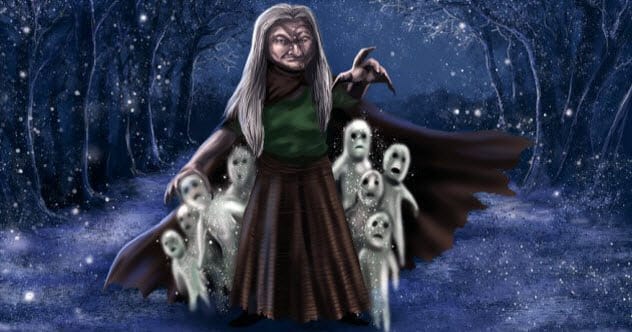
In parts of the German and Austrian Alps roams a terrifying character who can be either somewhat friendly or brutally mean. Frau Perchta may have her origins in the pagan religions which dominated the area before the coming of Christianity, but she has maintained a role in the modern world. And that role is horrific.
Frau Perchta is often shown as a crone with an animalistic face and a long robe. Below the robe, she keeps hidden her sharp knife. Frau Perchta tours homes during the 12 days of Christmas. If she finds a child who has been well-behaved, then she may feel inclined to leave him a small gift. If she discovers a naughty child, then she gets out her knife.
How does Perchta judge the naughtiness of a child?
She looks at your spinning. If you have not spun all your wool or flax into yarn by the end of Twelfth Night, then Frau Perchta will disembowel you with her knife. Having pulled out your innards, she will stuff you with straw and sew you back up.[2] Gives a different meaning to feeling stuffed after your Christmas dinner.
8 Kallikantzaroi
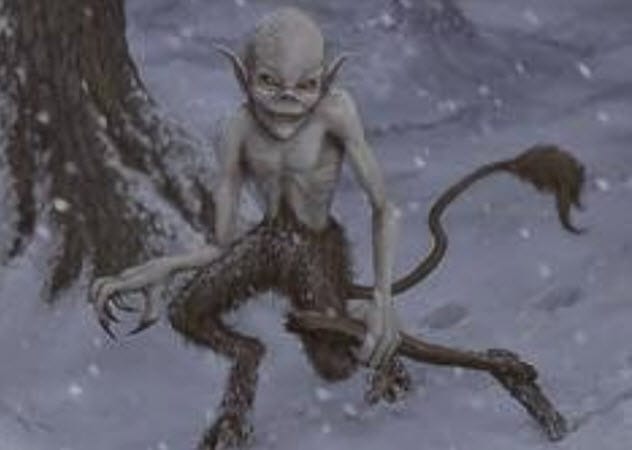
The Kallikantzaroi and spirits like them are found throughout southeast Europe. These subterranean ghouls are small, black, impish creatures. You are only likely to see them during the 12 days of Christmas because they spend the majority of their time deep in the center of the Earth attempting to destroy the world.
According to the myth, the world is held up by a World Tree. Its roots and branches support the Earth, and it is here that the Kallikantzaroi do their devilry. For most of the year, they attempt to saw down the World Tree.
However, when Christmas comes each year, they abandon their hacking down of the World Tree to create havoc on Earth. This allows the World Tree to heal so that the Kallikantzaroi will never actually destroy the world.
To avoid the Kallikantzaroi wreaking destruction in your home, you can employ a number of tactics. You might hang the jaw of a pig behind the door. Like many demons, the Kallikantzaroi cannot avoid counting things. Hang up some flax, and they will get too busy counting the strands to be a nuisance. As they like to enter via the chimney, the coziest way to keep them out is to keep a roaring fire burning for the 12 days of Christmas.[3]
7 La Befana
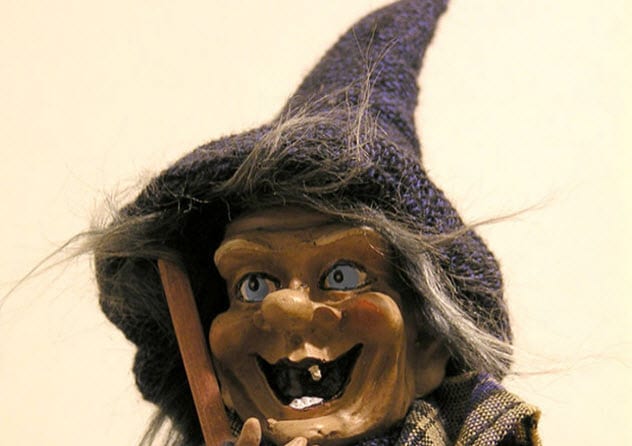
Christmas visitors appear to love entering homes via the chimney. La Befana from Italy is another guest who would probably appreciate it if you swept your chimney. On the night of January 5, La Befana, a hideous old witch, will descend the chimney and judge all the children of the home. Expecting her visit, the children all leave socks attached to the mantle.
If La Befana finds you have been good, she will fill your socks with goodies. If you have been naughty, then all you can expect is a lump of coal. It may be that this lump of coal is related to the pagan burning of women to bring in the new year. However, her name is derived from Epiphany, the Christian feast during which she appears.
According to one tradition, La Befana was visited by the Wise Men on their way to see the infant Jesus. She offered them hospitality for the night, and in the morning, they suggested that she join them on their journey to visit the newborn Christ. She declined. Later changing her mind, she never could find them or Jesus. So now she spends her time giving gifts to all the children in the world.[4]
As with another Christmas character who spends his time distributing gifts and coal, it is traditional to leave out some food and drink for La Befana. The food varies across the regions of Italy, but every house leaves her a glass of wine.
6 Gryla And The Yule Cat
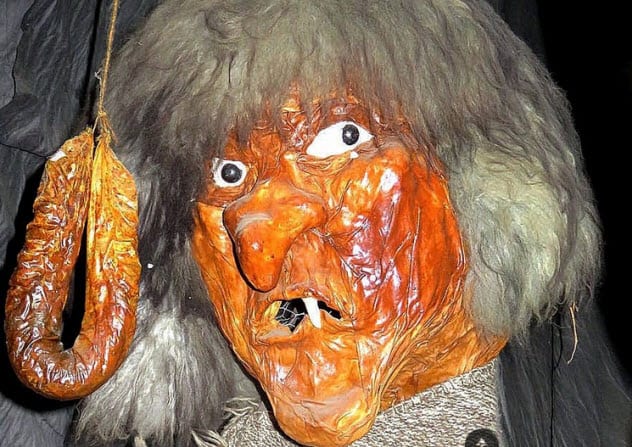
In Iceland, there is one of the most bloodcurdling Christmas characters in the world—a cannibalistic, hideous giantess called Gryla. She also has a fearsome cat.
Gryla is a troll who has been mentioned in Icelandic folklore since at least the 13th century. At some point, she became more associated with Christmas and has put her nasty talents to festive use. Gryla stalks the children of Iceland during the holiday season. If she finds any bad children, she stuffs them in her sack and carries them away to devour later.
As if Gryla was not sufficiently wicked, she also has a bad-tempered Yule Cat, Jolakotturinn, that acts as a fashion critic at Christmas. The Yule Cat is a huge beast that looks for children who are not wearing new clothes.
This is not because it supports the commercialization of Christmas. In Iceland, children who had done all their chores would be given new clothes. Therefore, any child not wearing new clothes must have been naughty. When the Yule Cat spots a child in old clothes, it eats the poor kid.[5]
5 The Yule Lads
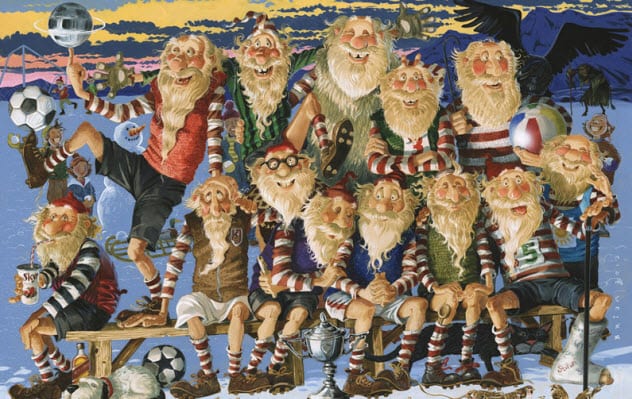
At some point, Gryla decided that her cat was not sufficiently scary to torment children. So Gryla and her equally monstrous husband produced 13 sons—the Yule Lads. For each of the 13 days before Christmas, a child will leave a shoe under the window. When one of the Yule Lads finds the shoe, he will put some sweets inside if the child has been good that day or a rotten potato if the kid has been bad.
The Yule Lads are now a mischievous set of boys who leave small gifts, but they were not always so tame. In 1746, Icelandic parents were banned from scaring their children with stories of the Yule Lads, suggesting that these characters used to have more than rotting vegetables in their arsenal.
Each of the Yule Lads has a name that relates to his obsession. Door Slammer loves to make noise and chaos by slamming doors. Stubby is a short lad who will steal food from the frying pan. Sausage Swiper cannot resist stealing sausages. Others have names like Door Sniffer, Spoon Licker, and Window Peeper.[6]
4 Zwarte Piet
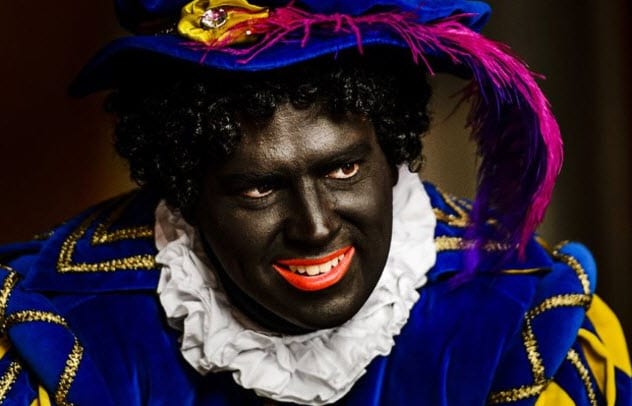
Every year, you can be sure of one fight at Christmas: Is Zwarte Piet a racist caricature? Zwarte Piet is a Dutch tradition in which people will black up their faces—which is why his name means “Black Pete”—and take part in parades as helpers of Father Christmas. Needless to say, the changing standards of the modern world have led to this tradition being reinterpreted as outrageously racist.
Some defenders of the Zwarte Piet character say that his dark skin is caused by his climbing in and out of chimneys. Those who find him offensive say that the big red lips, curly hair, and huge gold earrings are classic racist stereotypes of black slaves. In recent years, the Dutch government has made moves toward getting rid of Zwarte Piet from parades and even the UN has called for Piet to be removed as an outdated relic.
The role of Dutch traders in the slave trade is an aspect of their history that many Dutch people seem unwilling to examine. It seems clear that supporters and opponents of Zwarte Piet will be clashing for many Christmases to come.[7]
3 Caganer
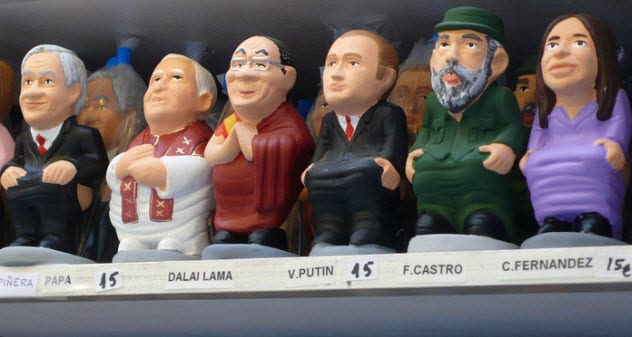
What could be more traditional at Christmas than a nativity scene of the infant Jesus? All the characters are familiar—Mary, Joseph, the Wise Men, the shepherds, and the animals. In Catalonia, though, there may be someone lurking whom you did not expect—the Caganer (aka “the Defecator”). Just off to the side of the Holy Family will be a figurine explicitly shown with his pants down in the act of pooping.
The origin of the Caganer is not known. It is at least 200 years old and started in farming communities. Anyone without a Caganer in his nativity scene was sure to have a bad year.[8]
One theory is that the Caganer is a representation of a farmer fertilizing his field, if more personally than most agricultural workers. While the original Caganer was a farmer, you can purchase modern figurines caught in the act of defecation which represent a variety of famous people and fictional characters. Should you desire a statuette of the queen of the United Kingdom to add to your Christmas decorations, then you will be able to find a suitable Caganer.
2 Krampus
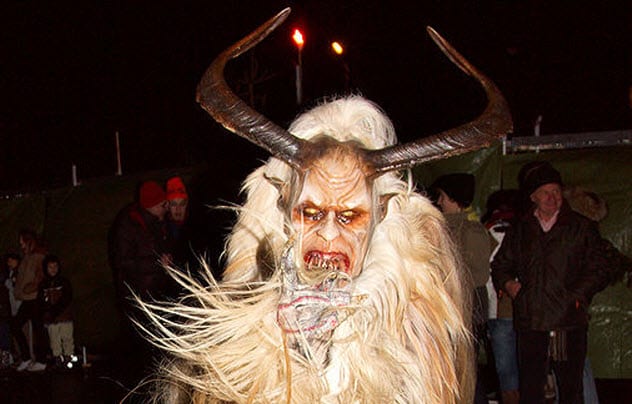
Krampus is undergoing a renaissance. Where once the half-goat demon was hardly known outside of Central Europe, he can be found now in horror films, novels, and TV programs throughout the English-speaking world.
The feast of Saint Nicholas, one of the original sources of Father Christmas, falls on December 6. The previous night is Krampusnacht. While Saint Nicholas visits people to spread cheer and gifts, his companion Krampus comes to punish the wicked or even carry off wicked children.[9]
His origins predate Christianity, and he may be a pagan demon that became incorporated into the Christian tradition. Though the Catholic Church attempted to put down any celebration of Krampus, the festival survived.
Now in many places, a Krampus run is held during the holiday season. Men dressed as Krampus run through the streets armed with bundles of birch twigs to beat bad people. One way to ward off the attention of Krampus is to offer him strong alcohol.
1 Mari Lwyd
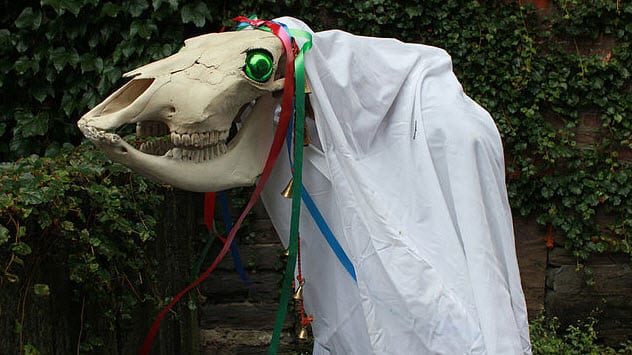
What do you get if you take a horse skull and turn up at your neighbor’s door? Possibly a visit from the police in most countries. But in Wales, you get the tradition of the Mari Lwyd.
Throughout Britain, there are many ancient traditions of “hooded animals” being used in parades. A reveler hides underneath a cloth with an animal costume above. In Wales, that costume is just a fleshless horse skull.
At Christmas and New Year’s, bands of people will celebrate by leading the Mari Lwyd to doors while these people sing and perform verses. The occupants of the house will respond with witty verses of their own. Often, the quality of the singers’ voices is mocked and both sides are accused of drunkenness.[10]
If those outside can verbally beat those inside, then the Mari Lwyd will enter the home and supposedly bring luck. Or at least as much luck as a skull on a stick can offer.
Read more stories about the Christmas characters who might visit you on 10 Benevolent Or Frightening Beings That Visit You On Christmas and 10 Real-Life Santa Clauses Who Brought Cheer And Joy.



